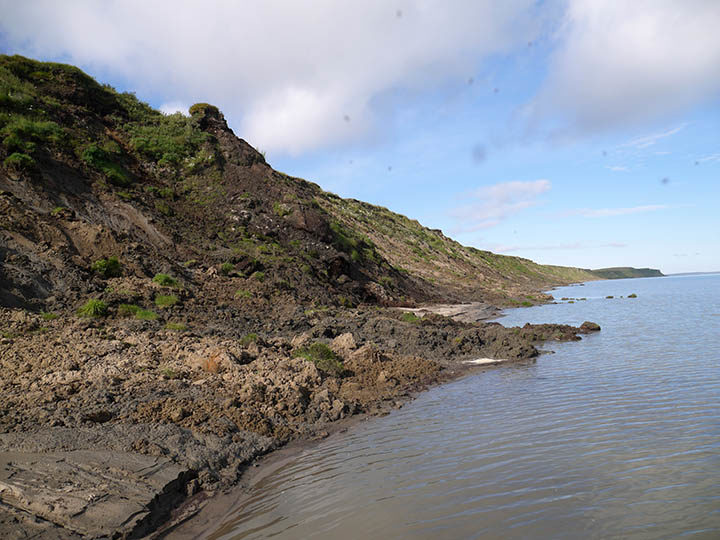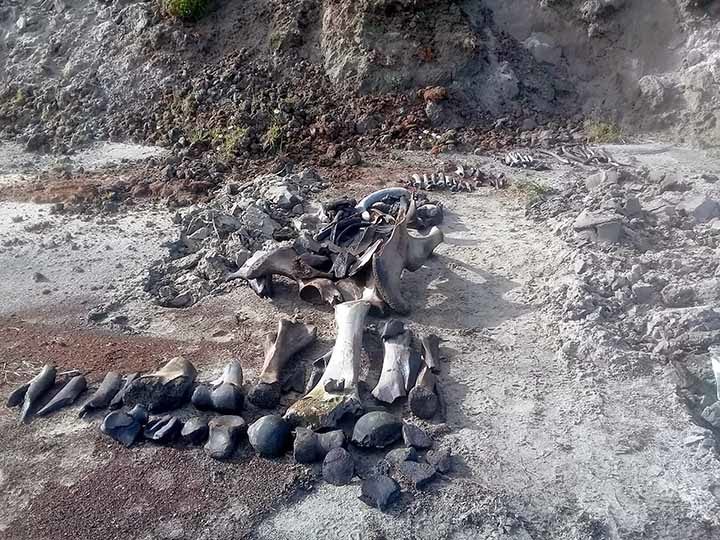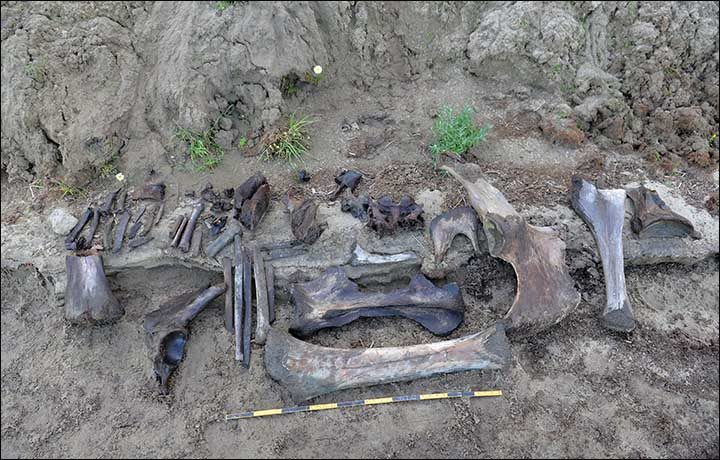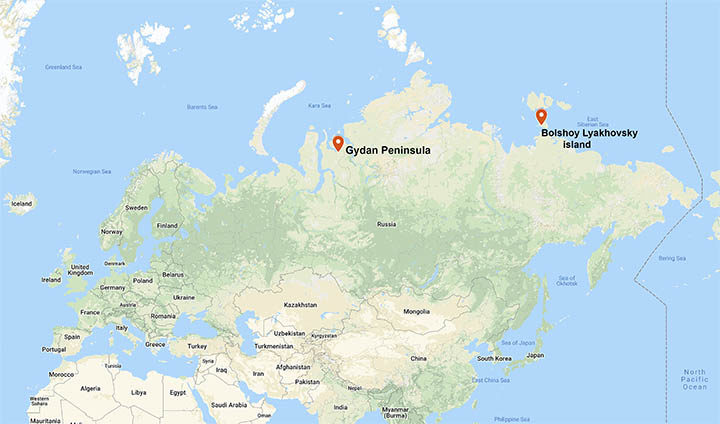Judging by the bones, the animals came to this remote Arctic site give birth - and also to die.
This was a prehistoric maternity hospital and necropolis for mammals that included the extinct mammoth and cave lion, along with species of horse, musk ox, bison and reindeer.
Found here too were the bones of an ancient hare, a wolf, a polar fox, a brown bear, and rodents.
And not only mammals. There were many bird bones too.
Many of the bones were adults: this is where the animals died.
Yet expert Dr Pavel Kosintsev said that among the mammal remains were also found the bones of newborn animals.
So as well as dying here, this was a 'breeding ground' for a wide range of species.
The site - far from properly examined due to high water levels this summer - is seen as largest and 'richest' such bone collection in Arctic Eurasia and may turn out to be the largest in the world.
It also led scientists to other early conclusions.
For example, it showed how far north certain species ventured during this period.
Comment: As you can read in the linked articles below, it's more likely because the climate there was very different then.
'Territory of the cave lion and brown bear in the north of western Siberia between 10,000 and 50,000 years ago have spread above 71 degrees of northern latitude,' said Dr Kosintsev.


The remaining bones include so far unidentified mammal or bird remains.
Prior to this the largest collection of mammoth fauna in Russian Arctic was on the southern shore of Bolshoy Lyakhovsky island (Novosibirsk Islands).
Yet why would ancient animals come here to start and end their lives?
This still remains to be answered.
One theory maybe that here was a source of sustenance - perhaps a salt lick.
Prior to this the largest collection of mammoth fauna in Russian Arctic was on the southern shore of Bolshoy Lyakhovsky island (Novosibirsk Islands).
In 1999 were a discovery of 1,019 bones was made.
The Gydan expedition was held in August, funded by the Russian Foundation for Basic Research and the Yamalo-Nenets region.
Scientists plan to make radiocarbon dating of the bones.
It is also planned to study the rock samples to assess the possibilities of reconstruction of the natural environment in the era of mammoths and after their extinction.
Dr Kosintsev is senior researcher of the laboratory of paleoecology of the Institute of Plant and Animal Ecology, Ural Branch of the Russian Academy of Sciences.





Comment: Research of similar pits and caves from all over the globe show that the bones have suffered the kind of damage that can only be associated with a cataclysmic event: